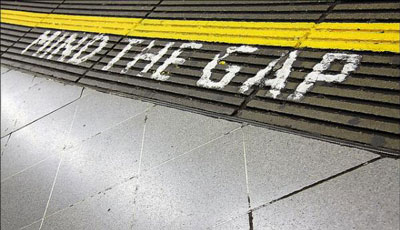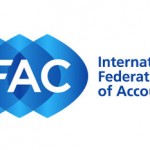The gap between accountants and clients

I was intrigued to read some new and original research published by Robert Craven of The Directors’ Centre, reports Mark Lee.
Craven is no stranger to AccountingWEB. My interview with him in 2012 about his book, ‘Grow Your Service Firm’, has been viewed more than 10,000 times. This followed an earlier controversy when he said that clients should sack their accountants if they were not contributing to their business growth.
Mind the gap
Craven’s new research, based on “12 years of relatively informal data gathering”, identifies what he describes as a significant and frequent ‘service delivery gap’. For accountants this would translate as the gap between accountants’ who believe they provide an above-average client experience and those whose clients agree.
The differences are quite stark. 80% of service providers reported that they deliver an above-average client experience. Yet just 14% of the same service providers believe that their clients would agree that they had received an above-average experience. And, when asked, only 11% of clients (using a smaller data-set) felt they had received an above-average experience.
Craven states that “This ‘service delivery myopia’ or ‘deafness’ appears to be most apparent in professional service firms: the firms are the most optimistic and their clients’ reported experience is very low.”
Like Craven I am surprised that so many service providers appear to hold inconsistent points of view:
- “A totally unrealistic view (over-inflated?) of the customer experience they are delivering”
- “A totally realistic view of what their clients think of their delivery”
Why does the gap exist?
If we accept that accountants fit the mould of the research, what might be the reasons for the ‘service delivery gap’?
Craven suggests that the gap may occur for a number of reasons:
- Basic blindness or inability to take on client feedback
- Being too much in love with one’s own service
- Not being close enough to the client
- Failure to track and monitor every step of the client journey
- Preoccupation with hard measures and statistics that sit neatly in a spreadsheet
- Forgetting the purpose, the why, of their business
- Inability to believe that there could be a better way of delivering
- Smugness that the client is not always right
- Failure to design new services that exceed client satisfaction
To this list I would add other more specific possible reasons including:
- Misunderstanding what elements of service clients really value (e.g.: being told explicitly about the tax savings you have achieved on their behalf; and regular feedback showing that seeking such savings is a key part of your service)
- Sending the same standard letters and newsletters to all clients with inadequate attempts at personalisation
- Missing the opportunity to do anything special for individual clients, possibly by assuming all clients want and value the same things
- Confusing normal service levels with what it would take to provide ‘above-average’ service levels
- Failing to effectively communicate the value of the service being provided and what makes it stand out as better than average
The service delivery gap model developed by Parasuraman, Zeithaml and Berry (1985) identifies five different gaps and the list above could fit neatly into the following five categories:
1. The customer gap: The gap between customer expectations and customer perceptions
2. The knowledge gap: The gap between consumer expectation and management perception
3. The policy gap: The gap between management perception and service quality specification
4. The delivery gap: The gap between service quality specification and service delivery
5. The communication gap: The gap between service delivery and external communications
Referrals and recommendations
When asked, accountants typically reference referrals and recommendations as the primary ways in which they secure good new clients.
It strikes me as odd, to say the least, that anyone would be happy to continue providing a high quality service that they do not believe is fully appreciated by clients. The more clients who recognise the high level of service you provide the more likely they will be to refer and recommend you to others.
Solutions
If any of this resonates you are probably already aware of the solutions, as they are all pretty basic and obvious – in theory at least. As Craven notes:
“In some senses, the solutions feel like a return to the basics of a first year ‘Marketing 101’ course. Somewhere along the way, [accountants] have lost the plot. The key is to design the customer journey through the eyes of the customer. The following strategies and initiatives will start to address the service delivery gap issues:
- Get customer-centric
- Identify key target customers
- Create a clear value proposition and a clear message and voice
- Design and align sales, marketing and operations
- Use the appropriate channels to communicate.”
I would agree that appropriate strategies are required to close the gap. Nothing will change overnight. The question is what specific actions could you take to pursue such initiatives?
Do you agree?
Of course the other possibility is that Craven’s research doesn’t resonate with members of AccountingWEB. Remember his starting point was two questions:
1. Do you consider that you provide an above-average client experience?
2. Do you think that your clients would agree that they receive an above-average experience?
Perhaps you feel there is no need to provide or to be perceived as providing an above-average client service experience?
In my view it is the client’s perception that is key here. Of course it’s important to one’s personal integrity to do one’s best. Beyond that though it must make sense to ensure that clients know how lucky they are to have you as their accountant. If you can do that and get them telling other people about you then more referrals of new clients should follow too.
You can access the full research report, Mind the gap – What companies are missing and what to do about it, by Robert Craven of the Directors’ Centre.
Author: Mark Lee is consultant practice editor of AccountingWEB. He also facilitates The Inner Circle group for accountants, entertains as a conference speaker on ‘How to STAND OUT and be remembered, referred and recommended’; and is chairman of the Tax Advice Network of independent tax specialists.
Source: accountingweb





























